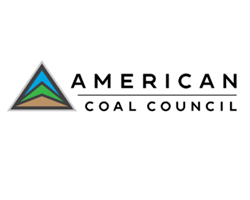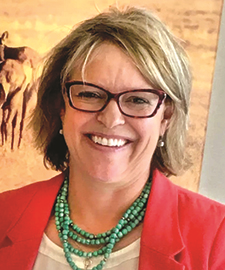Thank You for Choosing Reliability: An ACC Op-Ed on DOE’s Investment and DOI’s Action

By Emily Arthun, President & CEO, American Coal Council

Emily Arthun
October 3, 2025 - Every so often Washington makes a decision that isn’t about political buzzwords or rhetoric, instead it’s about whether the lights stay on and whether a paystub shows up on a Friday. This is one of those moments. The Department of Energy’s $625 million commitment to reinvigorate America’s coal fleet, paired with the Department of the Interior’s decision to open 13.1 million acres for coal leasing while streamlining approvals and right-sizing royalties, tells the country—plainly—that reliable, affordable, plentiful power is back at the center of national policy. On behalf of producers, transporters, suppliers, utilities, and the hundreds of thousands of men and women whose craft keeps America powered, the American Coal Council says: thank you.
For years, we were told that “something else” would seamlessly replace baseload power. But reality is a stubborn thing, and peak demand is unforgiving. During unrelenting summer heat or frigid winter snaps hard, press releases don’t turn turbines and hashtags don’t boil water. Actual baseload megawatts do. The Department of Energy’s investment recognizes this truth. By directing $350 million to recommission and retrofit coal units, DOE is turning near-term reliability from a talking point into dispatchable capacity. By targeting rural affordability and flexibility—funding wastewater upgrades that extend plant life and co-firing options that add operational agility, DOE is giving operators the tools they need to perform when the grid needs them most. This is not theory. It is steel, wire, boilers, and crews—standing ready at 6 p.m. on a windless January evening and at 3 p.m. on a hot August weekday when factories and data centers are pulling hard.
Interior’s action is the complementary half of the same common-sense equation. Power plants cannot run on optimism; they run on fuel secured through lawful leases, workable permits, and predictable timelines. Opening 13.1 million acres for coal leasing, guided by Executive Orders 14261 and 14241, moves coal from the “constrained input” column to the “accessible resource” column—exactly where it belongs in a nation intent on reindustrialization. When Secretary Doug Burgum signed the policy initiative to expand leasing, reduce the royalty rate to a market reality of 7%, and cut red tape on reviews, he sent an unmistakable message: we will produce energy here at home, with American workers and American standards, and we will do it on a schedule that aligns with real-world demand.
This is energy policy that respects the American worker. From Freedom and Falkirk in North Dakota to expansions at Warrior Met, Skyline, Spring Creek, and West Antelope III, Interior’s leasing posture translates into shifts on the mine plan, trains on the rail, barges on the river, and megawatts on the wire. It also translates into the morning routines of families whose livelihoods depend on this industry: lunches packed on a kitchen counter, kids on a bus, a mortgage paid, a pew filled on Sunday. When Washington gets energy right, it strengthens the very communities that anchor this country.
The administration’s emphasis on recovering critical minerals from mine waste is another example of practical stewardship. Through Secretary’s Order 3436, Interior’s push—with USGS and state partners—to map deposits and fast-track projects for uranium, zinc, germanium, tellurium, and rare earths recognizes that the future of defense, manufacturing, and energy security runs through American resourcefulness. Coal communities know the terrain, the geology, and the logistics better than anyone. Enlisting their expertise to extract additional value from legacy sites turns yesterday’s tailings into tomorrow’s strategic inputs—and it does so while remediating lands with the people who know them best.
We also welcome the clarity and regulatory certainty that come with streamlining approvals. Energy projects fail not because they are impossible but because the calendar gets weaponized. A maintenance upgrade that should take months becomes a multi-year odyssey; a routine expansion sinks under the weight of duplicative reviews and shifting standards. Interior’s move to accelerate leasing decisions and use commonsense approaches under NEPA is not a “giveaway.” It is an admission that the public interest is not served by paralysis. The public interest is served by good projects built well, observed by real inspectors, and delivered on time.
DOE’s investment framework mirrors that realism. Funding for wastewater systems is not glamorous, but it is the difference between a plant that limps toward retirement and a plant that earns another decade of dependable service. Support for dual-fuel retrofits and natural-gas co-firing does not “replace” coal; it gives operators the flexibility to meet the moment without walking away from the backbone of baseload. In short, the Department’s program honors the craft of the people who run these plants—the engineers who balance heat rates and emissions profiles, the maintenance crews who crawl boilers in August, the operators who manage frequency and voltage when the grid sways.
Americans have learned, the hard way, that you can’t command the weather, you can’t legislate inertia, and you cannot build an AI economy on wishful thinking. Algorithms sleep when the power fails. Semiconductor furnaces do not “wait” for wind. Hospitals cannot postpone a January night. The choice before us was never “old versus new.” It was “real versus rhetorical.” By aligning leasing, permitting, and investment with the grid we actually live on, DOI and DOE choose the real. That choice protects consumers from spiraling bills and rolling blackouts. It protects industry from the whiplash of scarcity pricing and curtailments. And it protects national security by anchoring energy in American hands.
To the men and women in hard hats and coveralls who make this all work: today’s actions are an affirmation of your place in America’s future. Miners in the high plains and the hollows, dispatchers in control rooms, electricians and mechanics who keep the systems tight and true—you have been told for a decade that you are the past. The truth is simpler: you are essential. You were essential when polar air snapped pipelines and coal carried the load. You were essential when a summer heat wave pushed reserve margins thin and coal units stood up and took the weight. You will be essential tomorrow as we build steel, pour concrete, and power the data centers that will define the next economy.
To our partners across the value chain—railroads and barge lines, port operators, equipment manufacturers, service providers, and utilities—these decisions offer something we have been missing: predictability. Predictability is the hidden currency of capital planning. It lets a mine invest in a new section, a plant invest in a turbine overhaul, a utility file an integrated resource plan that treats firm power as more than a contingency. Predictability also strengthens environmental performance, because operators can adopt better technology on a timetable that makes sense instead of on a roulette wheel of delays and litigation.
We are grateful to Secretary Burgum and the Department of the Interior for opening the acreage, restoring competitiveness through a fair royalty rate, and cutting through the procedural fog that too often chokes good projects. We are grateful to Secretary Chris Wright and the Department of Energy for funding the practical, near-term upgrades that translate into reliability and affordability for families and businesses. And we appreciate the complementary work by EPA Administrator Lee Zeldin and DOE Undersecretary P. Wells Griffith to align policy across agencies so that producers, utilities, and communities get one clear message: America intends to produce energy—responsibly, abundantly, and at home.
The American Coal Council believes in an “all-that-works” strategy that earns its keep. Coal has carried the baseload for generations because it is engineered to do so—because it is stockpiled on site, resistant to weather shocks, and dispatchable when it counts. That truth does not erase other sources; it anchors them. It provides the firm foundation on which innovation stands. With DOE’s investment and DOI’s leasing action, that foundation just got stronger.
We measure policy not by the decibels of its announcement but by the steadiness of its results: bills that don’t wreck a family budget, factories that don’t idle on hot afternoons, winter nights that pass without incident, and small towns that hum with work. By that measure, these decisions are wins—wins for consumers, for workers, for national security, and for an American future that builds instead of imports, that competes instead of concedes, that keeps faith with the people who make and move the power that keeps us free.
So yes—thank you. Thank you for choosing reliability over rhetoric, production over pretense, and American energy over dependence. Now let’s get to work.

